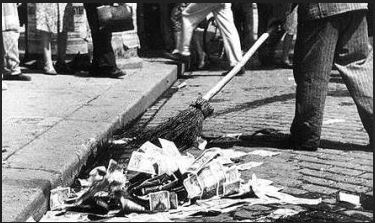Lucky Numbers, Lucky Drill Holes
Lottery fever stuck the nation last week. Here in Nevada, the casino titans don’t like the competition, so those seeking a lottery fortune, must drive to California or Arizona. There are businesses located just over the border selling tickets. The wait at the California border town ticket seller was two hours.
Lotteries have financed all sorts of things throughout history, Jason Zweig points out in the Wall Street Journal, The populace has never been good at math and approaches the lottery with their dreams on their sleeves. Zweig explains,
Only days ago, the scramble to buy tickets was highlighting some basic aspects of human nature: Money isn’t only about wealth, and people don’t understand probability. What’s more, the feeling of control can lead any of us to take risks we wouldn’t otherwise run. Even if you didn’t buy a Mega Millions ticket and never would, observing other people’s lottery fever should teach you these investing lessons as little else can.
Lotteries became popular when ticket buyers were able to pick their own numbers. A ticket holder’s odds may be one in many millions, but they feel their numbers are luckier than other people’s.
Zweig points out, “people often don’t select numbers independently.” For instance,
A study of more than 16 million tickets in the Swiss lottery found that bettors bought number combinations arrayed in a diagonal on the ticket more than 24,000 times; they played the numbers that had won the previous drawing 12,000 times. An analysis of 5.1 million lottery combinations in the Netherlands found that people picked their own birthdays 21% of the time. Californians seem to bet disproportionately on 9, 7, 3, 8, 11 and 6.
While total returns are negative in big lotteries like PowerBall and Mega Millions,
Still, the feeling of “someone is bound to be win, so it might be me” is hard to shake: In one British survey, 22% of people said they would win the national lottery jackpot during their lifetime.
I thought Brits were more sensible than that.
Although I don’t play state sponsored lotteries, I do buy the shares of penny exploration companies. The Sprott Global investment guru, Rick Rule, explains the odds of a particular precious metals discovery becoming a mine is 3,000 to 1. The best case investment payoff is likely 10-1, with much patience required and pain endured.
But a single whopper of a drill hole can provide ecstasy. For instance, those who play in this arena, are waiting on drill hole TTD102 from a tiny company, GT Gold that has been exploring in British Columbia’s renowned Golden Triangle. This writer has a rooting interest.
GT’s flagship asset is the wholly-owned, 44,206-hectare Tatogga property, located near Iskut, BC, close to roads and grid power. The big find is a major new gold-silver discovery at its Saddle prospect, located up a gentle valley only 10 kilometres off highway 37.
The “about the company” blurb says,
The Saddle discovery comprises two parts: a high-grade, near surface, epithermal gold-silver vein system at Saddle South and, close by at Saddle North, a largely covered, porphyry copper-gold-silver mineralized system. Geophysical surveying suggests that both may be large in scale, and early drill results suggest that Saddle North bears similarities to the nearby Red Chris deposit.
Otto Rock, a nom de plume, who produces the indispensable and quirky IKN Newsletter, wrote last week,
this [GT Gold] is currently my most compelling and highest conviction near-term trade idea. All the feedback garnered from trusted sources has been strongly bullish and while not in possession of material non-public information, the consensus is that Hole 102 when it comes will be the confirmation of both size and grade potential at Saddle North.
Mr. “Rock” is a number cruncher. Meanwhile, also keyed in on hole 102 is the widely followed and curmudgeonly Angry Geologist, who, as the name implies, is all about the geology.
When I look at the Saddle North Plan map (link), I noticed that a couple of the drill-holes, TTD098 and TTD107, don't appear to be optimally located. They appear to be targeting the pyrite halo and may only hit erratic, low-grade intervals (<0.25% CuEq with narrow zones of ~0.5% CuEq).
However, I'll be very interested to see what hole TTD102 gets, this could hit the bornite core and could get some decent, thick intervals of high-grade (>1% CuEq) mineralization.
I'm also interested in hole TTD106, if this gets grades similar to TTD085 (100+m @ >0.3 g/t Au and >0.3% Cu), this would be very positive as when you look at the sections, you can see that the highest grade mineralization starts at ~400m depth.
For years, the mining and exploration sector has been a place where money has gone to die, as gold and silver prices have declined and flattened.
Zweig’s conclusion provides hope (along with TTD102), “For investors, too, figuring out what other people are likely to do, and then persisting in doing the opposite, is the best way to come out ahead in the long run.”






